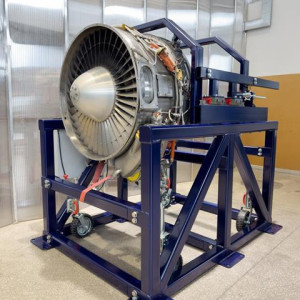Wright Electric poised for electric engine ground tests

Electric aircraft propulsion specialist Wright Electric is preparing to begin ground testing with the M2500 electric engine it is developing to power commercial aircraft, having completed construction of a test stand that will accommodate the trials. The New York-based company has also recently finished a series of simulated high-altitude testing at a NASA facility of its 2MW powerplant. Wright developed the MW2500 electric propulsion system with funding support from the US Department of Energy's Advanced Research Projects Agency.
It views the engine as a future power option for regional jets, turboprops and other commercial aircraft. The company came on the scene several years ago and has been working to develop its motor and systems.
 Wright has now "completed construction of a dedicated thrust test stand for electric jet engine performance analysis", the company said on 5 May.
Wright has now "completed construction of a dedicated thrust test stand for electric jet engine performance analysis", the company said on 5 May.
The stand "is being installed" at Wright's laboratory in the New York town of Malta, north of New York City. Wright plans to start using the test stand in summer or early autumn. "Initial low-power thrust testing (500 kW) will utilise Wright's first-generation electric motor, while full-power testing will follow the completion of the second-generation WM2500," it says.
The test stand comprises a "fan module" taken from a 7,000lb (31kN)-thrust Honeywell LF507-1F turbofan, which Wright calls "representative of propulsion loads for regional jets". It worked with an entity called REA Space and with Rzeszow University of Technology in Poland to build the test stand, while two companies - CFS Aeroproducts and Avalon Aero - helped convert the LF507's fan module "into a single-stream configuration compatible with electric motors", Wright says. Separately, Wright says it has completed "high-altitude chamber testing" of the WM2500 motor.
Those tests were completed at NASA's Electric Aircraft Testbed site, located at the agency's Armstrong research centre in Sandusky, Ohio
"The motor was tested to full voltage at a simulated altitude of 40,000 feet," Wright says. "This milestone validates the WM2500's performance under real-world flight conditions, critical for aircraft larger than 30 passengers that typically cruise above 30,000ft."
"We believe the WM2500 is the most-powerful electric aircraft motor ever tested at altitude," says Wright chief technology officer Colin Tschida.